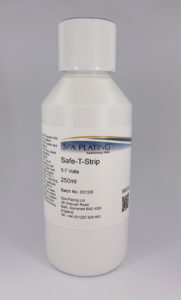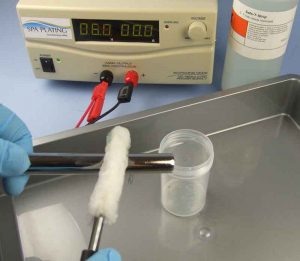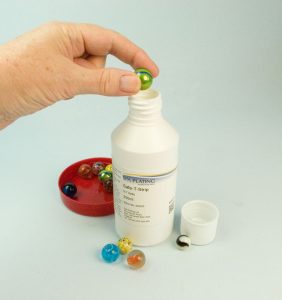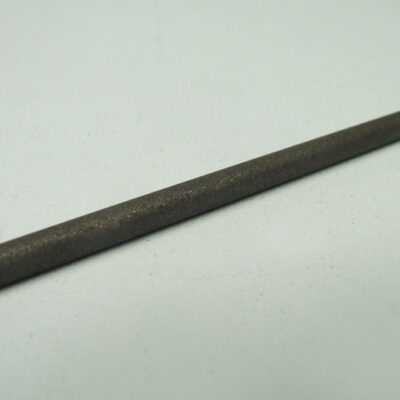The safest chrome stripper on the market today;
- No hazardous bi-products such as dichromates
- Non corrosive and caustic soda free
- Doesn’t attack your swabs
Please note: This is an air-sensitive solution. When not in use, keep the lid tightly shut and take measures to minimise the air space remaining in the bottle. These can include adding marbles or glass beads to the bottle or squeezing out the excess air at the top of the bottle.
Failure to observe the above precautions will result in the degeneration of the solution.
Please click on the ‘Examples’ tab below for suggestions on how to minimise air contamination.
HS Code: 3824 99 70
| Features |
Used for |
| No hazardous byproducts |
Doesn’t turn your swab yellow or damage it and doesn’t give off hazardous fumes |
Ues a stainless steel electrode
After stripping, treat your work with MPU rather than ActiClean.
Chrome stripping Trouble Shooting
One of the most important things to remember when you are chrome stripping is to make sure you reverse the voltage in order to strip and then, when stripping is complete, that you reverse the voltage back again to normal for plating. It’s very easy to forget to do this, so keep checking as you go along.
| Type of problem |
Possible reason |
What to do |
| No stripping taking place |
1 Incomplete electrical circuit
2. Article not in fact chrome plated
but made from
some other highly polished metal, such as stainless steel.
3. Chrome already stripped! |
1. Check all electrical connections
and clean if necessary. Make sure
the swab is fully soaked in solution;
if not, re-dip the stainless steel electrode
and leave to soak for a few seconds.
Check you have reversed the
normal current at the rectifier by
either plugging the black lead into
the red socket and the red into the
black or, if you are using the Expansion
Box, the switch is in the ‘strip’ position. CAUTION! Remember to reverse
back all of the leads and switches when you come to plate, as you may damage your work if you forget.
2. You may be able to go straight ahead with cleaning and activating with MPU and then plating.
3. Pay special attention to parts that you suspect only have a thin layer of chrome. You can reduce the voltage to 4 volts to increase the stripping time. |
| Chrome stripping very slow |
1. Unusually thick layer of chrome plate.
2. Poor electrical contact. |
1. Allow more time than usual to strip.
2. Check and clean all contacts. |
| After stripping, surface of work underneath is dull or is, in extreme cases, etched. |
Voltage for stripping set too high. |
| Reduce the voltage to 6 volts and continue. This problem is particularly common with thick chrome plate, for example on some kinds of car badges. If the work is getting quite hot, stop stripping for a moment to allow it to cool and then continue. Polish out the dullness or etch using the buffing wheel. |
|
General guide;
Certain small items, for example Swabs, Nibs and Plating Pens can be sent by normal post within the UK
- The courier option for UK deliveries is FedEx
- Free UK mainland delivery available on orders over £200
- International orders usually 3-5 working days.
For all price quotations for deliveries, please add your items to our shopping cart. You will be able to see the shipping costs by clicking on the ‘Calculate shipping’ button in the cart and before checking out.
Please click on the link below to download the SDS for this product:
https://goldn.b-cdn.net/msds/safe_t_strip.pdf




